
Trends In Instrumentation
Editor In Chief of Dimensions of Dental Hygiene, Anna M. Pattison, RDH, MS, discusses advancements in instrumentation.
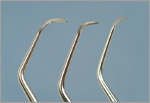 Figure 1. From left to right: standard Gracey 7/8, mini-bladed Gracey 7/8, micro mini-bladed Gracey 7/8. |
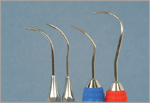 Figure 2. Various diamond coated hand instruments. |
What are some recent trends in periodontal instrumentation?
In the past decade, the most significant advancements in periodontal instrumentation include:
- Miniaturization and thinning of both manual and powered instrument tips,
- Use of both magnetostrictive and piezoelectric ultrasonic instruments,
- Diamond coated instruments, both manual and powered,
- Local anesthesia and new subgingival local anesthetic gels,
- Adjunctive antimicrobials and local delivery antibiotics,
- Magnification and microscopes,
- Dental endoscope,
- Calculus detection probes,
- New and improved metals that require less sharpening or no sharpening at all, and
- Research on the use of lasers.
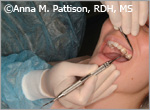 Figure 3. Extraoral fulcrum for maxillary left posterior teeth, buccal approach. |
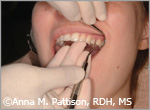 Figure 4. Intraoral fulcrum for maxillary left posterior teeth, buccal approach. |
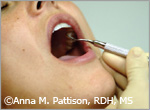 Figure 5. Extraoral fulcrum for maxillary left posterior, lingual approach. |
What are some of the newest trends in hand instrumentation?
Miniaturized instruments, such as the mini-bladed Gracey curets, are now made even smaller. Micro mini-bladed Gracey curets are used in Germany and will eventually become available in the United States (Figure 1). These instruments are half the size of the currently available mini-bladed Gracey curets and allow better access to furcations, developmental depressions, and very tight, narrow pockets. They are also ideal for subgingival use with the dental endoscope.
Diamond coated hand instruments are innovative new instruments for final debridement and polishing of root surfaces and furcations (Figure 2). They are not designed for heavy calculus removal. After almost all of the calculus has been removed with manual or powered instruments or a combination of both, diamond coated instruments are used with very light pressure to achieve a clean, smooth, even root surface. Light strokes in various directions remove the last bits of embedded or burnished calculus and biofilm from the roots in developmental depressions, deep pockets, and furcations. When used properly, these instruments do not remove root structure excessively.
When should dental hygienists use extraoral or alternative fulcrums?
These techniques become most important when treating patients with deep periodontal pockets. Extraoral or alternative fulcrums are essential for effective scaling in deeper pockets because they allow better access and adaptation of both manual and powered instruments.
 Figure 6. Modified pen grasp. |
 Figure 7. Reinforcing an extraoral fulcrum with the index finger on the nondominant hand. |
Extraoral or opposite arch fulcrums can allow you to reach up or down into deep pockets that are awkward or difficult to access with conventional intraoral fulcrums (Figure 3). Standard intraoral fulcrums offer stable power for shallow, healthier areas. However, when periodontal pockets become deeper, these traditional fulcrums and positions can limit the reach and length of your stroke (Figure 4). Often these rigid intraoral fulcrums will prevent the proper adaptation of your instrument to the root surfaces at the base of these deep periodontal pockets, especially on maxillary posterior teeth.
By extending your grasp on the instrument handle and using a hand rest further away from your working area, you can maneuver your instrument blade or ultrasonic insert tip so that it is properly adapted to the root surface before you begin your strokes (Figures 3 and 5).
How can hygienists get more force or power with hand instruments?
The amount of force or power generated with hand instruments depends on body and hand positioning, grasp, and your fulcrum. First, it is very important to position your hand and body so that the thumb of your dominant hand is able to apply the primary force to the instrument blade (Figure 3). Make sure you are using a modified pen grasp with your instrument resting against the bony side of your middle finger and also against your index finger somewhere between the knuckle and the second joint of the index finger (Figure 6).
Using a close intraoral grasp and fulcrum (Figure 4) provides good stability and strength but the length of stroke is limited. Strokes start out very strong but tend to lose strength in deep pockets. Blade angulation often becomes more closed as the cemento-enamel junction is approached. An extended grasp with an extraoral or opposite arch rest will allow you to achieve optimum angulation, adaptation, and power throughout the length of the stroke. This is the ideal approach for scaling deeper pockets (Figure 3).
To establish a secure, powerful extraoral fulcrum, first extend your grasp down the handle further away from the blade (Figure 5). This extended grasp has the effect of extending the “lever arm” of your instrument to increase power. Also, using a reinforcing index finger or thumb from your nondominant hand can double the force applied to your blade (Figure 7). Always make sure that your body position allows the thumb of your dominant hand to be in an ideal position of power.
From Dimensions of Dental Hygiene. July 2005;3(7):26-27.

